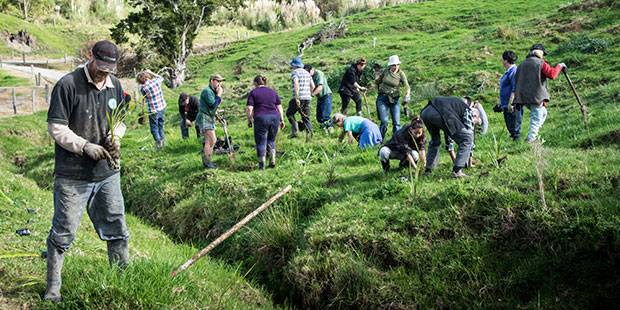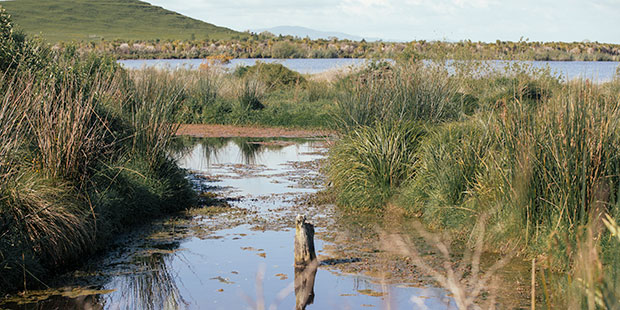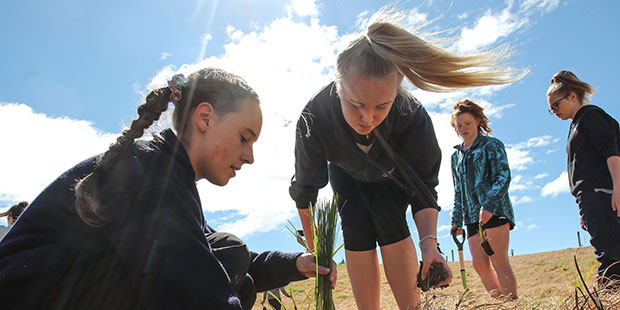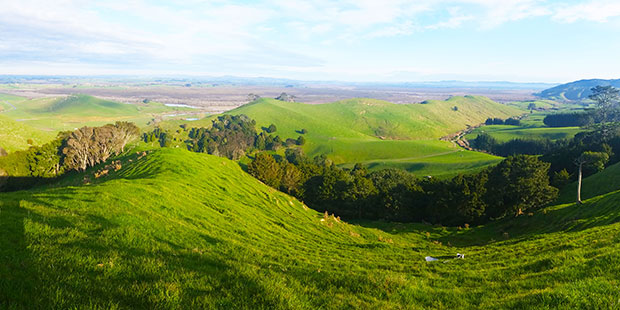370,000 ways to look after land
Water quality is a focus of far-reaching dairy farm environmental plan


A Southland dairy farmer is going to extraordinary lengths to re-establish native forest on the property he manages – with plans to establish up to 370,000 trees and plants in coming years.
The planting project - to take place on 25ha of unproductive land on the farm - is so huge that Steve Smith, general manager of a 374ha dairy operation near Winton, has set up his own nursery because local businesses are unable to supply enough plants.
He is eco-sourcing many seeds from a 63ha area of bush on land next to the farm. Known as Motu Ngahere (island of bush), this block contains one of the few native forest remnants in Southland.

Photo / Supplied.
Photo / Supplied.
“We think we’ll need to progressively put in about 370,000 native plants,” he says. “We’ve already started in small areas (he estimates about 6000 trees have gone in so far) and we’ve got another 9000 plants growing in the nursery.”
Smith, together with his farm manager Mitchell Smith (no relation), has been running the farm near Winton, a small Southland township about 34km from Invercargill, for about six years.
The project is one of a number of steps the operation is taking to protect the environment, improve water quality and reduce run-off to environmentally sensitive waterways in the district, including the Winton Stream, Oreti River and the New River estuary, a large 4100ha tidal lagoon at Invercargill.

Lime planting. Photo / Supplied.
Lime planting. Photo / Supplied.
In other measures, a team of four environmental specialists are employed and Smith has invited local runanga to discuss Maori values associated with looking after the land.
Two other businesses are run on the property – an agricultural lime works (AB Lime) and a landfill which takes Southland’s municipal household waste. Smith set up the dairy operation on areas of land surplus to the other businesses and today milks 950 cows.
“We believed dairying offered us the best opportunity for a good return,” he says. “Our aim was to do it well with a focus on animal welfare, sound milk production and good environmental practices.”

Steve Smith – setting up pest control. Photo / Supplied
Steve Smith – setting up pest control. Photo / Supplied
Water management was a key focus: “Before starting the dairy farm, we did a lot of water testing on the property. We’ve continued testing every month since and found that, besides nitrogen, phosphate and e-coli are present in the water and likely come from a variety of sources.”
To help understand where the water was coming from and moving to - and to develop ways of slowing its movement – Smith’s team undertook detailed aerial mapping of the farm.
As a result, they are planning to construct a series of detention bunds (embankments) in key sites to help control water flow. They have installed one, made entirely from soil (100m long, 2.2m high), with a series of pipes and a sump to control outflow; they plan seven more.

Manuka nursery. Photo / Supplied.
Manuka nursery. Photo / Supplied.
“The water can still get through the pipes but the structure definitely slows it down and gives the sediment time to drop out,” he says.
With the first bund installed in June, Smith says it is too early to tell what effect it is having, although the signs are promising: “Winter is our dry season in Southland but we have had a number of rainfalls with only small accumulations of run-off observed behind the bund.”
He says run-off ultimately finds its way to the Winton Stream which flows into the 170km-long Oreti River, one of Southland’s main rivers known for supporting black-billed gull breeding grounds. The Oreti itself feeds into the New River estuary.
Aerial mapping also helped identify areas of the farm able to be taken out of production - which is where the 370,000 trees and plants will go.

Central Southland College volunteers. Photo / Supplied.
Central Southland College volunteers. Photo / Supplied.
Smith says 25ha has been earmarked as unproductive and planting will include varieties like lancewood, kahikatea, southern rata and other plants unique to the limestone hill country typical of the area. There are also plans to create public walking tracks.
Smith and his team are carrying out other environmental initiatives. On the adjoining Motu Ngahere block, they are working to rehabilitate a 14ha area of scrubland into native bush, build a wetland and continue a pest eradication programme.
In the last 18 months they have culled 890 pests including possums, hedgehogs, cats, rabbits, deer and pigs and cleared areas of plant pests including elderberry and gorse.
“Our vision is to create a sanctuary for central Southland native fauna and flora in our own 63ha block of native bush,” Smith says.






